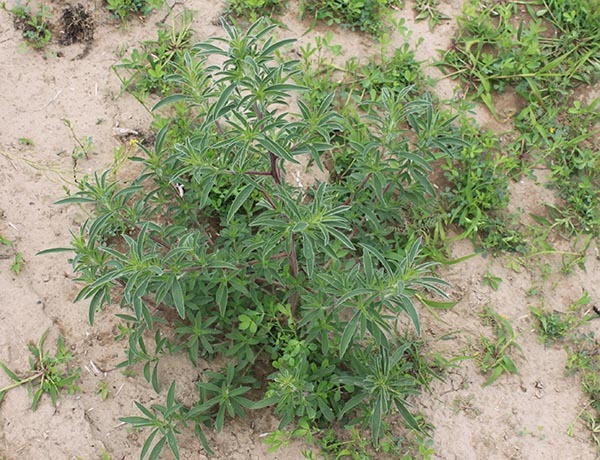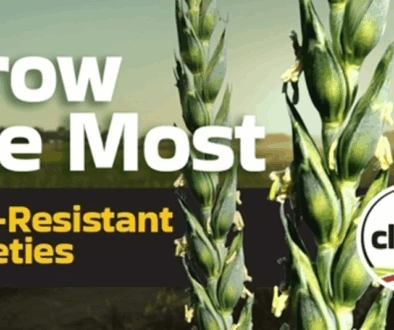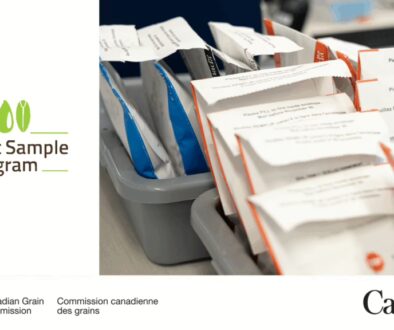Managing Kochia in Barley: Effective Strategies for Season-Long Control
By Mitchell Japp, MSc, PAg
Understanding Kochia: A Persistent Challenge
Kochia is one of the most troublesome weeds in modern crop production. While not highly competitive, it thrives in dry and saline soils, where crop competition is limited. Additionally, kochia has developed resistance to multiple herbicide modes of action, making control increasingly difficult. Because it is a prolific seed producer capable of adapting to different growing conditions, managing kochia requires a season-long approach.
Kochia Seed Longevity and Early Control Strategies

Kochia seeds have a short lifespan in the soil, typically lasting only one to two years. This presents an opportunity to reduce seed banks through strategic weed management.
Pre-harvest weed control can help minimize kochia seed production. However, malt barley buyers do not accept barley treated with pre-harvest herbicides, limiting options for control in malt barley fields. Fortunately, barley is a naturally competitive crop, and early-season weed control can suppress kochia growth, reducing seed production throughout the season.
Read: Top Considerations of Early Season Weed Control in Cereals
Late-Season Kochia Management in Barley
Barley is typically harvested earlier than many other crops, particularly in hot, dry conditions like those experienced in 2023. Research from Montana shows that a single kochia plant can produce an average of 4,100 seeds if crops are harvested by mid-August, prior to the first killing frost. While growing conditions on the Canadian prairies differ slightly, similar results have been observed by Dr. Charles Geddes with Agriculture and Agri-Food Canada in Lethbridge.
Post-Harvest Kochia Control: Is It Necessary?
In years when harvest is ahead of normal progression, kochia can continue growing in already-harvested fields. If barley fields are harvested before mid-August, a post-harvest herbicide application may be necessary to prevent further seed production and limit weed pressure for the following year.
For fields harvested after mid-August, kochia plants typically do not have enough time to mature and produce viable seeds before frost. However, a post-harvest herbicide may still be beneficial for moisture and nutrient management.
Read: Fall Considerations: Wrapping up the Growing Season
 Key Takeaways for Effective Kochia Control
Key Takeaways for Effective Kochia Control
-
Early-season control: Barley’s competitiveness can help suppress kochia, reducing seed production.
-
Pre-harvest considerations: Malt barley buyers do not accept treated crops, making early weed management essential.
-
Post-harvest strategies: If harvested before mid-August, consider herbicide application to limit seed production.
-
Long-term management: Reducing the kochia seed bank through season-long control strategies will help mitigate future infestations.
By taking a proactive approach to kochia management, barley producers can improve crop competition, reduce herbicide-resistant populations, and maintain high-quality yields for future seasons. Find more expert tips in A Quick Tip on Kochia Management from Dr. Charles Geddes, AAFC.
Further Reading
- Postharvest Kochia (Kochia scoparia) Management with Herbicides in Small Grains. Mickelson et al. 2017
- Herbicide Resistant Kochia – Challenges and Management. The Growing Point Podcast
- The Kochia Conundrum. Agronomist Happy Hour podcast
- Wheat School: Cultural practices as effective as a new mode of action
- Controlling the Weed Seedbank




